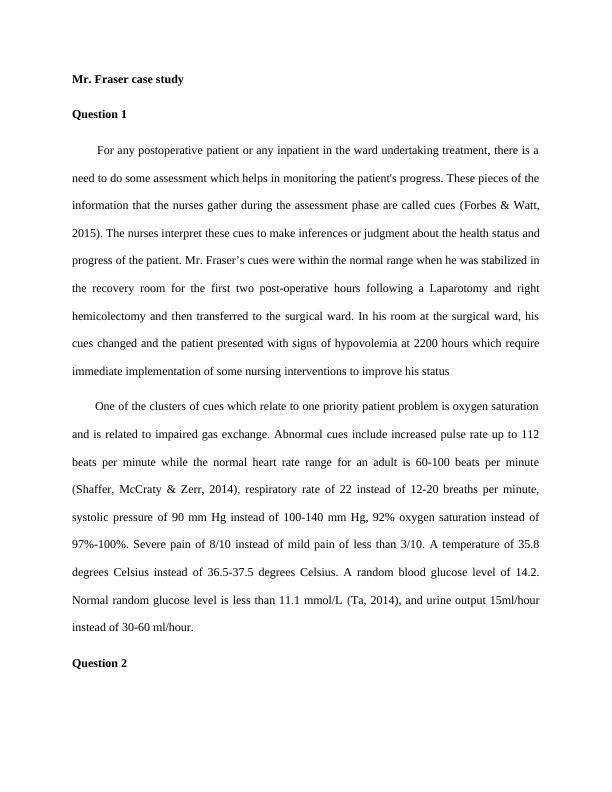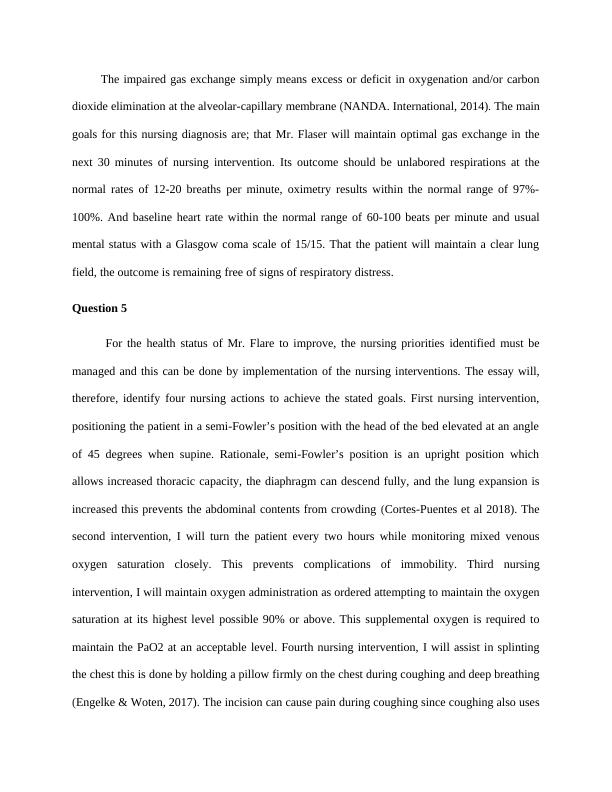Mr. Fraser Case Study: Nursing Assessment and Interventions
6 Pages1374 Words91 Views
Added on 2023-01-18
About This Document
This case study discusses the nursing assessment and interventions for Mr. Fraser, a postoperative patient who developed signs of hypovolemia. It explores the cues, health problems, nursing diagnosis, and interventions to improve his health status.
Mr. Fraser Case Study: Nursing Assessment and Interventions
Added on 2023-01-18
ShareRelated Documents
End of preview
Want to access all the pages? Upload your documents or become a member.
Health Assessment
|8
|1657
|73
10 NURSING. :. NURSING. Nursing. Name of the Student. N
|12
|3194
|1
Clinical Reasoning Cycle for Open Mesh Inguinal Hernia Repair
|11
|2738
|313
Clinical Reasoning Cycle and Vital Signs Measurement
|7
|2033
|138
Nursing Priorities for Eleanor Wilson's Care
|8
|2965
|1
Practice Portfolio of Evidence PART B: Clinical Encounter Analysis
|6
|1996
|230



